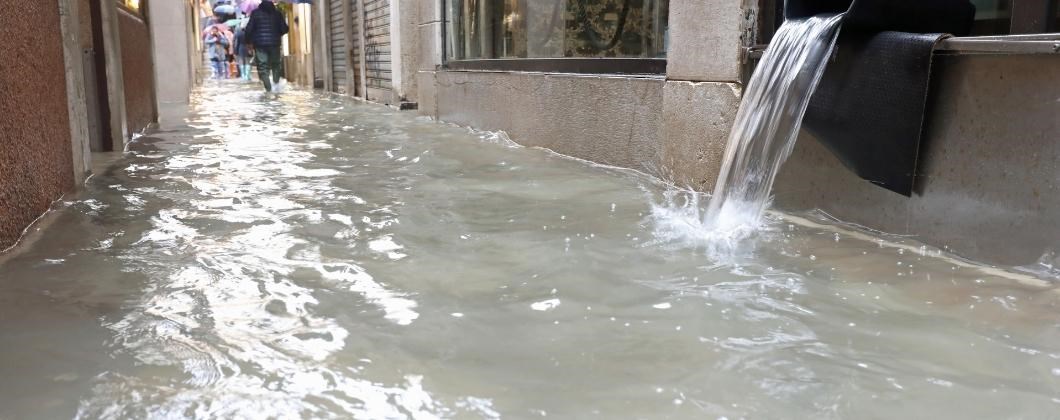Preparing Your Business for Flooding

Floods can sometimes be predictable. For example, charting the habitual swelling of the tides establishes typical water levels and indicates when coastal areas might be prone to flooding. However, more often than not, floods can arise without warning—rivers, lakes or the sea can overrun, swamp defences and surge through the surrounding areas.
The fickle nature of UK weather only exacerbates the unpredictability of floods, and with so many areas susceptible to flooding, one unexpected severe storm can trigger widespread, damaging floods. In England and Wales alone, more than 5 million properties—as many as 1 in 6—are at risk of flooding. One in 14 Scottish properties and 1 in 20 Northern Ireland properties are also at risk. With these odds, there is a good chance that one of these properties at risk belongs to you.
Neglecting to prepare your property for possible flooding can sink your business. Stay afloat with solid preparation and a thorough flood plan.
Preparing for Floods
It is impossible to completely flood-proof your property, but flood preparation can lower your business’ risk of damage and reduce business interruptions.
Begin your preparation by consulting your area’s flood risk map. The Environment Agency (EA) publishes maps for England here, for Wales here, for Scotland here, and for Northern Ireland here. The EA makes three types of maps, each addressing a different flood hazard: surface water, reservoirs, rivers and the sea.
For areas of high flood risk, the EA offers Floodline Warnings Direct, a free service that provides flood warnings via telephone, mobile, email, SMS text messaging and fax. Sign up here.
Once you have assessed your risk, it is time to prepare your business accordingly. Buy and install products in advance that fortify your property against water. Consider the following precautions against flooding when building or remodelling:
- Purchase flood boards for your doors that you can install when flooding is imminent.
- Seal floors to prevent water seeping up through the ground.
- Fit non-return valves to drains and both inlet and outlet water pipes.
- Install high shelving where you can store items when flooding is inevitable.
- Raise electrical sockets, fuse boxes and wiring at least 1.5 metres above the floor.
- Keep a pump in the basement or lowest level to remove flood water.
In combination with your business’ physical flood prevention measures, adopt the organisational precautions listed below for more comprehensive flood preparation:
- Compile a list of useful telephone numbers, including Floodline, your local authority and your insurer.
- Learn how to shut off your gas, electricity and water.
- Develop a flood contingency plan with suppliers and clients.
- Designate an emergency flood contact.
- Train your employees in correct flood safety procedures, and establish a safe meeting place in case you need to evacuate.
- Stockpile useful materials like plastic sheeting, plywood, sandbags, nails, hammers and shovels.
Creating a Flood Plan
A flood plan is a written document outlining how your business will respond to a flood. Store your business’ flood plan in an easily accessible location—everyone should know where it is at all times. All flood plans should include the following:
- A list of important contact information, including Floodline (0845 988 1188) and any additional flood warning systems, building services, suppliers and evacuation contacts
- A map showing locations of supplies, protective materials and shut-off points
- An outline of basic strategies for protecting property, ensuring health and safety, minimising business disruption and facilitating recovery
- Procedural checklists for staff to use during a flood
Review and update your plan annually. Flood risks and procedures can change, so make sure your business is prepared.
Staying Prepared
Flood insurance is the ultimate preparation for your business. Check your commercial cover to make sure you are covered for flood damage.
Flooding poses a substantial—but not ruinous—threat to UK businesses but you can mitigate some of these costs by preparing well. Contact our risk management experts for more flood-preparation materials and help keep your business from going under.
